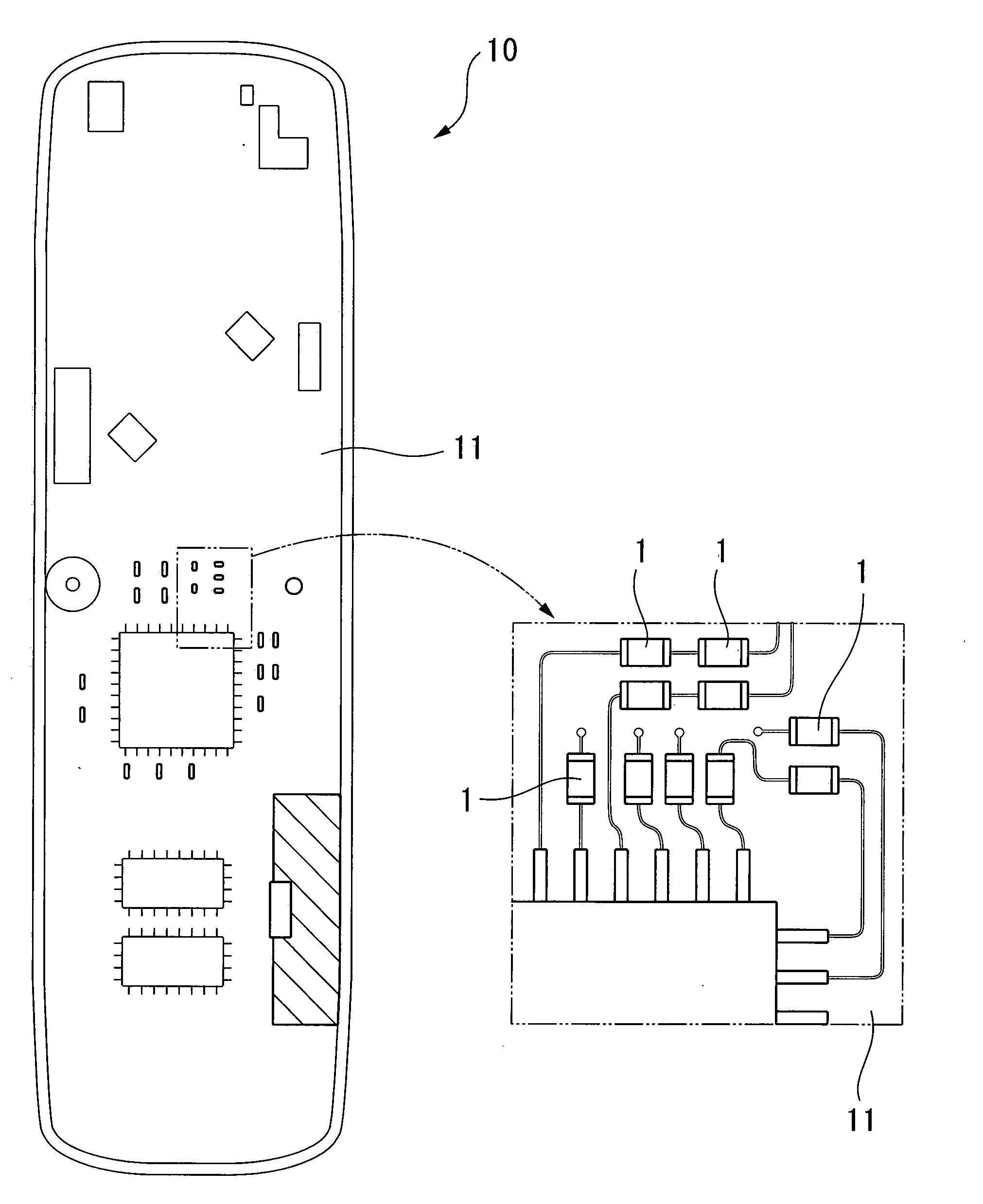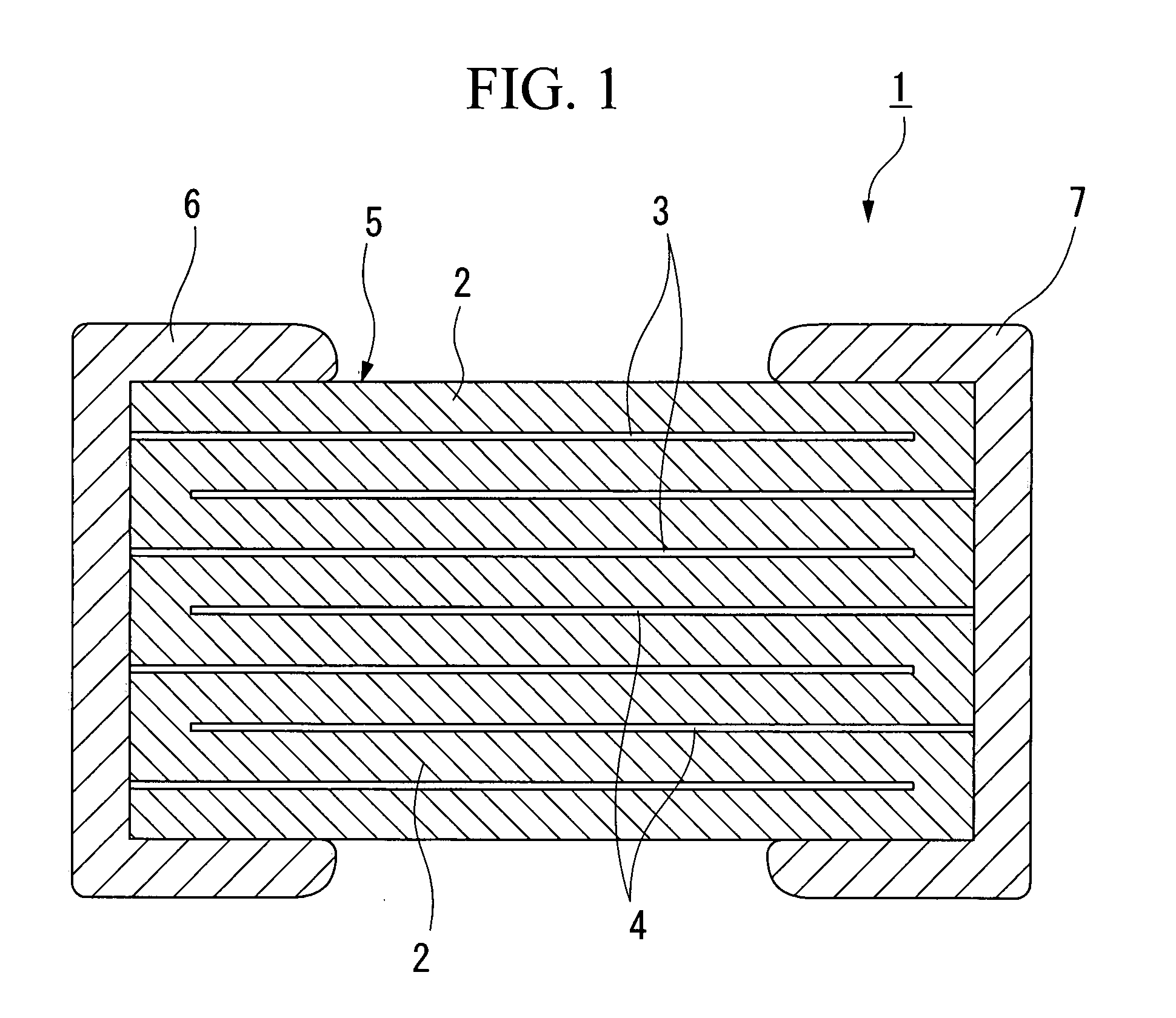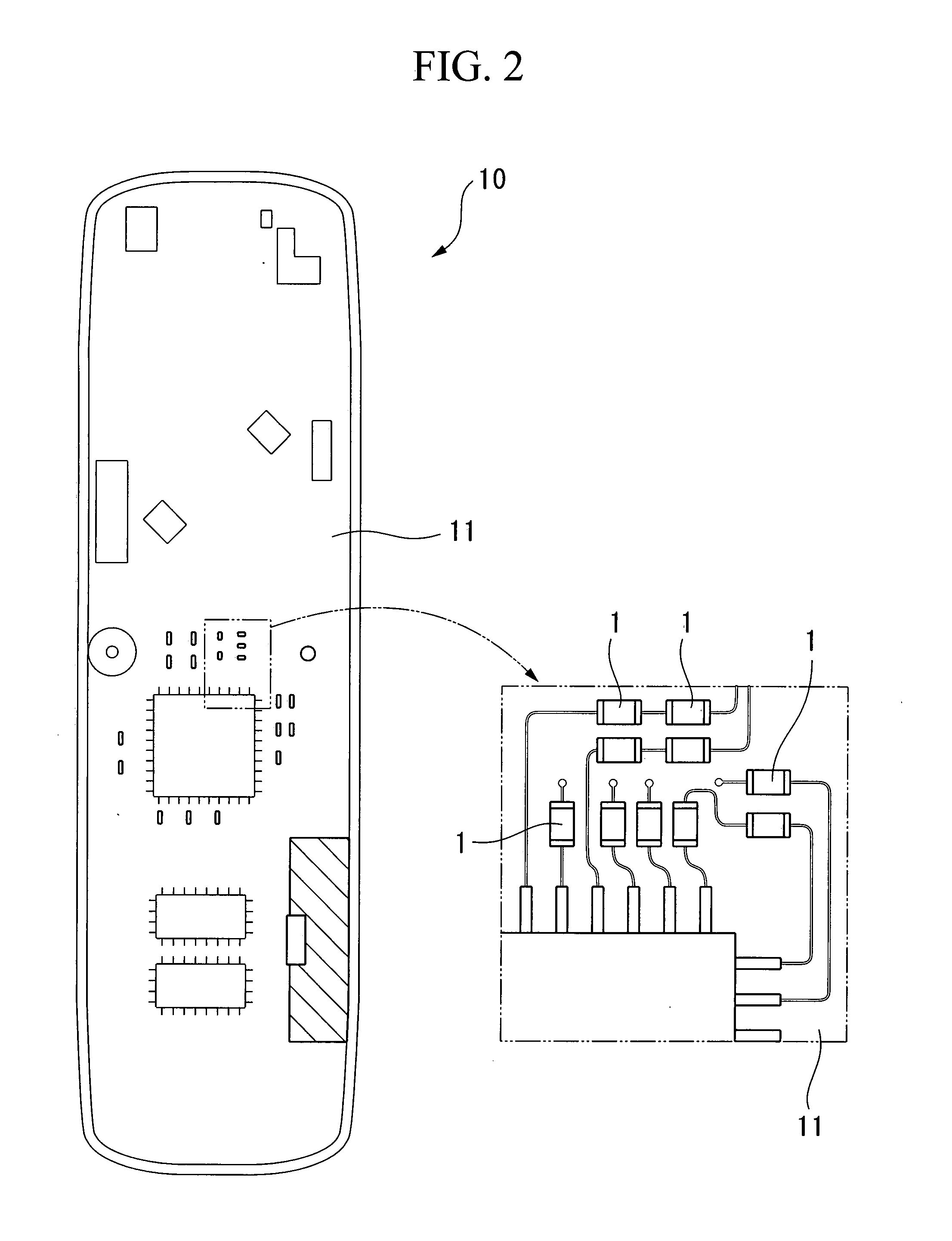Barium Titanate, Production Process Thereof and Capacitor
- Summary
- Abstract
- Description
- Claims
- Application Information
AI Technical Summary
Benefits of technology
Problems solved by technology
Method used
Image
Examples
example 1
[0096]An aqueous solution containing titanium tetrachloride (produced by Sumitomo Sitix, purity: 99.9%) at a concentration of 0.25 mol / L was charged into a reactor equipped with a reflux condenser, and the solution was heated to a temperature near the boiling point while preventing escape of chloride ion and keeping the solution acidic. The solution was kept at that temperature for 60 minutes, thereby hydrolyzing titanium tetrachloride, to obtain a titanium oxide sol.
[0097]The obtained titanium oxide sol was dried at 110° C. and the crystal type was examined by an X-ray diffraction apparatus (RAD-B Rotor Flex, manufactured by Rigaku Corporation), as a result, this titanium oxide was found to be a brookite titanium oxide.
[0098]Thereafter, 126 g of barium hydroxide octahydrate (produced by Barium Chemicals Co., Ltd.) and 456 g of an aqueous 20 mass % tetramethylammonium hydroxide solution (produced by Sachem Showa) were added and after adjusting the pH to 14, heated to 95° C. in a rea...
example 2
[0106]A perovskite-type fine particulate BaTiO3 powder was obtained in the same manner as in Example 1.
[0107]This powder was examined in the same manner as in Example 1, as a result, the specific surface area was 7.7 m2 / g and the c / a ratio determined by the Rietveld analysis was 1.0104. This c / a ratio was found to be larger than the c / a ratio (1.0080) calculated by assigning the specific surface area (7.7 m2 / g) to formula (1). Also, the electric properties were measured in the same manner as in Example 1. The results obtained are shown in Table 1.
example 3
[0108]A perovskite-type fine particulate BaTiO3 powder was obtained in the same manner as in Example 1. The obtained powder was kept at 800° C. for 2 hours and thereby crystallized.
[0109]This powder was examined in the same manner as in Example 1, as a result, the specific surface area was 12.5 m2 / g and the c / a ratio determined by the Rietveld analysis was 1.0074. This c / a ratio was found to be larger than the c / a ratio (1.0070) calculated by assigning the specific surface area (12.5 m2 / g) to formula (1). Also, the electric properties were measured in the same manner as in Example 1. The results obtained are shown in Table 1.
PUM
| Property | Measurement | Unit |
|---|---|---|
| Temperature | aaaaa | aaaaa |
| Fraction | aaaaa | aaaaa |
| Acidity | aaaaa | aaaaa |
Abstract
Description
Claims
Application Information
 Login to View More
Login to View More - R&D
- Intellectual Property
- Life Sciences
- Materials
- Tech Scout
- Unparalleled Data Quality
- Higher Quality Content
- 60% Fewer Hallucinations
Browse by: Latest US Patents, China's latest patents, Technical Efficacy Thesaurus, Application Domain, Technology Topic, Popular Technical Reports.
© 2025 PatSnap. All rights reserved.Legal|Privacy policy|Modern Slavery Act Transparency Statement|Sitemap|About US| Contact US: help@patsnap.com



